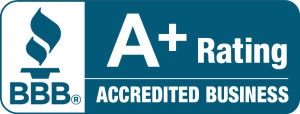In section 2, we explored how investing requires a certain amount of risk tolerance, along with how to consider where you might land on the risk tolerance scale between conservative and aggressive.
In this section, we’ll discover the different assets you can invest in, their levels of risk, and introduce the concept of asset allocation.
Different investment types carry different levels of inherent risk. In this section, we’ll get into what these different investment types are, along with their typical risk level and the advantages and disadvantages to investing in them.
Cash Alternatives
Cash alternatives are low-risk, short-term, and relatively liquid instruments that you may use:
- To provide you with relative stability
- To maintain a ready source of cash for emergencies or other purposes
- To serve as a temporary parking place for assets until you decide where to put your money longer term
Some examples of cash alternatives include:
- Certificates of deposit (CDs)
- Money market deposit accounts
- Money market mutual funds
- US Treasury bills (T-Bills)
The advantages of investing in cash alternatives include their predictable earnings, high liquidity, and little risk. The disadvantages are the low returns they provide, and the risk those returns won’t keep up with inflation.
Bonds
Bonds are essentially loans to a government or corporation, which is why they’re called “debt instruments.”
Bonds are issued in denominations as low as $1,000. The interest rate (or coupon rate), which can be fixed or floating, is set in advance, and interest payments are generally paid semiannually.
Bond maturity dates range from 1 to 30 years. However, bonds don’t need to be held until they mature. Once issued, you can trade them like any other type of security.
Some examples of bonds include:
- S. government securities
- Agency bonds
- Municipal bonds
- Corporate bonds
The advantages of bonds are the steady, predictable stream of income they provide and their low correlation to the stock market. The disadvantages are that their value fluctuates with interest rates and they are more at risk of default than cash alternatives.
Stocks
When you buy company stock, you’re purchasing a share of ownership in that business. Investors who purchase stock are known as the company’s stockholders or shareholders. Your percentage of ownership in a company also represents your share of the risks taken and profits generated by the company.
If the company does well, your share of the total earnings will be proportional to how much of the company’s stock you own. The flip side, of course, is that your share of any loss will be similarly proportionate to your percentage
of ownership.
If you purchase stock, you can make money in one of two ways. First, corporate earnings may be distributed in the form of dividends, usually paid quarterly. Second, you can sell your shares. If the value of the company’s stock has increased since you purchased it, you will make a profit. Of course, if the value of the stock has declined, you’ll
lose money.
Types of Stock
Stock is commonly categorized by the market value of the company that issues the stock. For example, large-cap stocks describe shares issued by the largest corporations.
Other general categories include midcap, small-cap, and microcap. This is judged by the size of the company’s
market cap.
Some other categorizations include:
- Growth stocks: usually characterized by corporate earnings that are increasing at a faster rate than their industry average or the overall market.
- Value stocks: typically characterized by selling at a low multiple of a company’s sales, earnings, or book value.
- Income stocks: stocks that generally offer higher dividend yields than market averages and typically fall into the utility and financial sectors, as well as other well-established industries.
Common vs. Preferred Stock
A further distinction exists between common and preferred shares.
Common stockholders hold many rights, including the right to vote. However, common stockholders are last in line to claim the earnings and assets of the company. They receive dividends at the discretion of the board of directors and only after all other claims on profits have been satisfied.
Preferred stockholders are given priority over holders of common stock when it comes to dividends and assets. However, preferred stockholders do not receive all of the privileges of ownership given to common stockholders, including the right to vote. Preferred stockholders typically receive a fixed dividend payment, usually every quarter.
For preferred stockholders, there is less return potential than for common stockholders; there is also less risk.
Stocks have historically provided higher long-term returns than cash alternatives and bonds. They’re easy to buy and sell, can provide regular income, and come with ownership rights.
However, stocks are riskier. Poor company performance can affect the price or dividend payments you’ll receive for your shares. They’re also open to market volatility, and so may not be appropriate for people with short-term investment horizons.
Mutual Funds
The principle behind a mutual fund is quite simple. You pool your money with the money of other investors into a fund that then invests in certain securities according to a stated investment strategy.
The fund is managed by a fund manager who reports to a board of directors. By investing in the fund, you own a piece of the total portfolio of its securities, which could be anywhere from a few dozen to hundreds of stocks.
This provides you with both a convenient way to obtain professional money management and instant diversification that would be more difficult and expensive to achieve on your own.
Because you’re putting your money with other people and under someone else’s management, carefully consider the fund’s investment objectives, risks, fees, and expenses before investing. You want to be sure that the fund’s outlook and objectives fit your own.
You can learn about any mutual fund by reviewing the fund’s prospectus.
Mutual funds allow you to invest small amounts of money with a professional manager, giving you instant diversification and liquidity. However, mutual funds come with fees and expenses, and can potentially create some tax inefficiencies.
While potentially less risky than buying your stocks, the value of their portfolio fluctuates like stocks and so mutual funds are riskier than bonds or cash alternatives.
Active vs. Passive Management
These are the two types of mutual funds.
An actively managed fund is one in which the fund manager uses his or her knowledge and research to actively buy and sell securities in an attempt to beat a benchmark.
A passively managed account, called an index fund, typically buys and holds most or all of the securities represented in a specific index (for example, the S&P 500 index). The objective of an index fund is to try to obtain roughly the same rate of return as the index it mimics.
Some Types of Mutual Funds
Funds are commonly named and classified according to their investment style or objective, listed here from most conservative to most risky:
- Money market mutual funds invest solely in cash or cash alternatives.
- Bond funds invest solely in bonds.
- Stock funds invest exclusively in stocks. Stock mutual funds can also be classified based on the size of the companies in which the fund invests. For example, large-cap, midcap, and small-cap.
- Balanced funds invest in both bonds and stocks.
- International funds seek investment opportunities outside the U.S.
Dollar Cost Averaging
Many mutual fund investors use an investment strategy called dollar cost averaging.
With dollar cost averaging, rather than investing a single lump sum, you invest smaller amounts of money at regular intervals, no matter how the market is performing. Your goal is to purchase more shares when the price is low and fewer shares when the price is high.
Although dollar cost averaging can’t guarantee you a profit or avoid a loss, a regular fixed dollar investment may result over time in a lower average cost per share than if you had bought a fixed number of shares each time, assuming you continue to invest through all types of markets.
For example, let’s say that you decide to invest $300 each month toward your child’s college education. Because you invest the same amount each month, you automatically buy more shares when prices are low and fewer shares when prices are high. You find that your average cost per share is less than the average market price per share over the time that you invested.
Dollar-cost averaging is then a way to mitigate risk by easing into your preferred investment security rather than over-committing to a single price.
Asset Allocation
A portfolio should contain investments with varying levels of risk to help minimize exposure.
Asset allocation is one of the first steps in creating a diversified investment portfolio. It’s how you decide your investment dollars should be allocated among broad investment classes, such as stocks, bonds, and cash alternatives.
The underlying principle is that different classes of investments have shown different rates of return and levels of price volatility over time. Since different asset classes often respond differently to the same news, your stocks may go down while your bonds go up, or vice versa.
Diversifying your investments over non-correlated or low-correlated asset classes can help you lower the overall volatility of your portfolio and protect your investments.
However, diversification isn’t perfect. It doesn’t ensure a profit or negate the chance of a loss.
In section 4, you’ll learn how to choose the mix of assets that’s right for you.
As experienced financial professionals, we help clients like you figure out the best investment plan for their situation, so that you can put your money to work with peace of mind.
Please connect with us and let us help you plan for your future. We would be delighted to go on the journey with you.










